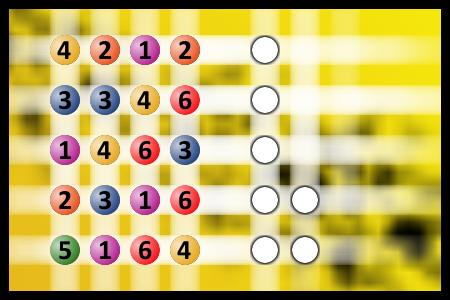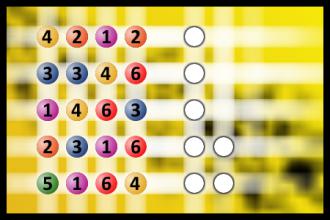What a winning combination?
The computer chose a secret code (sequence of 4 digits from 1 to 6). Your goal is to find that code. Black circles indicate the number of hits on the right spot. White circles indicate the number of hits on the wrong spot.Correct answers: 55
The first user who solved this task is James Lillard.
#brainteasers #mastermind

Thanksgiving
A man went one Thanksgiving to get a turkey from a live poultry farm. "Do you have any turkeys going cheap?" he asked."Nope," said the owner. "All our turkey go gobble, gobble.'"
Q: Why can't you take a turkey to church?
A: Because they use fowl language.
Q: What's the most musical part of a turkey?
A: The drumstick.
Q: Which cat discovered America?
A: Christofurry Columbus.
Q: Why can't you take a turkey to church?
A: Because they use fowl language.
Q: What's the most musical part of a turkey?
A: The drumstick.
Q: Which cat discovered America?
A: Christofurry Columbus.

